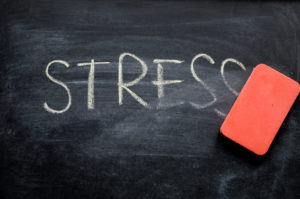
Reduce stress in your life through relaxation.
Per the Mayo Clinic, “Relaxation isn’t just about peace of mind or enjoying a hobby. Relaxation is a process that decreases the effects of stress on your mind and body.” Finding a method of stress-reduction is important for everyone. Practicing relaxation can take many different methods, but all with the same goal of regularly coping with everyday stress, and extra ordinary stress, as needed. The Mayo Clinic advocates stress-reduction techniques for everyone, but especially for its patients who may be dealing with a difficult diagnosis, a long-term illness or even chronic pain.
Techniques for Stress-Reduction
Top on the Mayo Clinic’s list of suggestions for stress-reduction are the following:
Autogenic relaxation. Autogenic, [defined by Merriam-Webster means: “of or relating to any of several relaxation techniques that actively involve the patient (as by self-hypnosis, meditation, or biofeedback) in attempts to control physiological variables (as body temperature and blood pressure)].” In this relaxation technique, you use both visual imagery and body awareness to reduce stress. Repeat words or suggestions in your mind to relax and reduce muscle tension. For example, you may imagine a peaceful setting and then focus on controlled, relaxing breathing, slowing your heart rate, or feeling different physical sensations, such as relaxing each arm or leg one by one.
Progressive muscle relaxation. In this relaxation technique, you focus on slowly tensing and then relaxing each muscle group. This helps you focus on the difference between muscle tension and relaxation. You become more aware of physical sensations. One method of progressive muscle relaxation is to start by tensing and relaxing the muscles in your toes and progressively working your way up to your neck and head. You can also start with your head and neck and work down to your toes. Tense your muscles for at least five seconds and then relax for 30 seconds, and repeat.
Visualization. In this relaxation technique, you form mental images to take a visual journey to a peaceful, calming place or situation. During visualization, try to use as many senses as you can, including smell, sight, sound and touch. If you imagine relaxing at the ocean, for instance, think about the smell of salt water, the sound of crashing waves and the warmth of the sun on your body. You may want to close your eyes, sit in a quiet spot and loosen any tight clothing.
Relaxation techniques abound. Check your local recreation centers for classes in yoga, Tai Chi, or meditation. Various religious faiths may also have methods of prayer that are relaxing. Massage, music or art therapy and hypnosis are some additional methods to consider. Searching on the internet will yield a bevy of techniques to sample at home. As with any new endeavor to improve your health, finding the one that you will do is the primary goal.






